Sound:
[responsivevoice_button]
The most important part about an audio product is its sound. At the price and the flagship status of the A18s, expectations are very high. Does it meet them? Let’s find out together. The following impressions are based on the m20 module. A quick look at the m15 module will be provided at the end of this section.
For this section I have used mostly the Lotoo PAW Gold Touch as my reference player. Most ear-time went into this pairing, but I have used other products too to come to a general conclusion. Other products include among others the Lotoo PAW 6000, Cowon Plenue L, Chord Electronics Hugo2 and Mojo, as well as the A&K SP1000M and Woo Audio WA11.
The overall signature of the A18s can be summarized in a couple of words. It has a striking balance with moderate warmth in its mid-range. The key strengths of the A18s are a powerful low-end, mesmerizing resolution and detailing as well as a sound stage that is one of the largest in any custom IEM.
The A18s has a full and engaging bass, that goes deep with decent grunt. Lows have nice texture and resolution. The A18s comes with a dense sounding bass, that has excellent speed and energy. It puts mid and upper-bass segments more forward than sub-bass. There is good impact and thunder in the bass when needed. Fans of Electronica could potentially find pleasure in the tight lows that come with a certain drive. Take Moderat’s tracks A New Error or Intruder for example. Here you get a powerful low end, that delivers impact and authority coupled with speed and body. I can especially recommend them on their Live album.
However, the A18s also shines with other genres. It has a natural sounding bass, that has just the right amount of air in it. Though it is still a BA-bass though, and to me that is very much audible. It doesn’t deliver the texture or the lush presentation of a dynamic driver. Although it certainly is one of the best sounding BA lows out there. The A18s also has no problem with bleeding lows. Bass stays where it should, and it does not overshadow any mid-range clarity. Nothing less should be expected from a monitor of that price though.
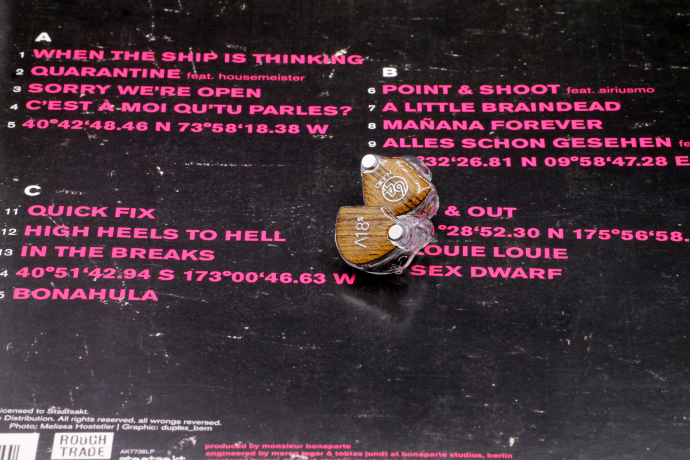
64 Audio A18s
The A18s has an organic and natural mid-range that sports mild warmth. It does not color mids towards a too warm sound, which is good for my personal taste. You get full bodied and dense mids, that have excellent note-size. The 18s has a smooth character, that makes instruments and vocals sound rich and tangible. A song I like to use for emotional connection is Apparat’s Goodbye. It can give me goosebumps if the delivery of the song is right. With the A18s this is what happens. Some of you might have heard this song as acoustical piece in Breaking Bad. It’s the scene where Gus Fring walks into the trap Walt has set for him. A powerful moment underlined by a powerful tune.
Instruments and singers sound realistic to me. There is excellent precision, resolution and clarity in the mid-range. As mentioned before, the warmth in the mids is just about right. You don’t get an overly lush or thick sound. The mids have great air in them, so they don’t sound congested, nasal or chesty. However, the emotions and soul male and female vocals deliver is right out perfect. Personally, I think the A18s could do with a dose more richness in its upper mid-range. It seems a bit dry at times, and could certainly benefit from extra glow.
In terms of technical performance, it’s hard to not acknowledge the A18s as one of the absolute best monitors out there right now. It creates a remarkably wide and deep stage with excellent control. It keeps its structure at all times, even when things get very messy. The A18s stays on top of complex situations during information overloaded segments. Even big piece arrangements like Frank Zappa’s band or orchestras don’t bring the A18s to sweat. It dissolves each part of the orchestra in Carl Orff’s Carmina Burana with ease.
Its ability to separate instruments and carefully placing them in the constructed room is very nice. Does it bring the surgical precision of the A18t’s? Not to me, no. Sure, it does a fantastic job in resolution and separation, but the A18t just goes a step further. The A18s still has very high resolution and it renders a very finely nuanced picture. Where the A18s performs exceptionally well in my opinion is layering. It has a wonderful sense of space and depth and makes it very easy to pin-point each musician and sound. The A18s has a nicely dark and almost black background. It lights musicians very well and gives a good contrast between them and the background.
The treble extension of the A18s is very good. It reaches far up the last Octave and does so without sounding offensive. Highs sound crisp and clear, but not sharp or edgy. The A18s creates a clean treble that’s neutral in richness. It doesn’t have a silky touch, so if you’re more keen on a treble that goes soft, maybe the A18s isn’t right for you. However, to me the 18s isn’t close to sibilance or sharpness. It doesn’t produce a piercing or hard sound. Higher pitched string instruments sound clear as water but without being in your face obnoxious.
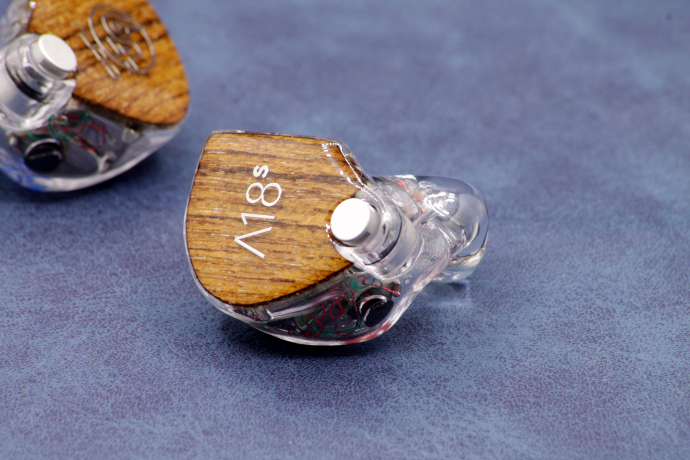
64 Audio A18s
M15
The signature of the A18s can be adjusted by swapping out the supplied apex modules. The m20 is installed by default, but it can be replaced by the m15 in just under a minute.
With the m15 installed, you get a more linear sound that is closer to neutral. You get a more open sounding and transparent mid-range and a bass, that has lesser impact, body and weight. Bass seems more controlled to me with the m20 module as well. Upper mid-range and lower treble seem a tad more forward with the m15 to me as well. It’s an airier and wider presentation, where the sound stage stretches in even wider measures. The A18s also appears more holographic with the m15 than the m20. It portrays music more in front of you, with a lighter flow.
The holography of the m15 module is something spectacular, but the added body and weight from the m20 is a characteristic I am deeply missing. For that reason, I stuck with the m20 module for the better part of my review time.
Scalability:
This is a new section I am introducing here today. I think it’s important to know, how well an IEM or headphone scales with higher end gear, respectively how it performs with just a smartphone. I won’t go into too much detail, as I am trying to keep these articles on point. But I want to give you a brief overview of how much the A18s can improve when you go up the ladder.
The A18s of course sounds excellent on its own, as we have learned just before. But to me, there are clear improvements when you take it a step further source-wise. Yes, it does sound great even out of my OnePlus 5t, but hook up the A18s to something more higher end, and you’ll gain in details, resolution, texture, layering and staging.
Out of my smartphone, it can sound more closed in and mellower. But when pairing the A18s with audiophile equipment, you’ll notice how much the A18s can scale up. You’ll gain in all technical aspects, but most of all the step up in resolution, imaging and staging is just excellent.
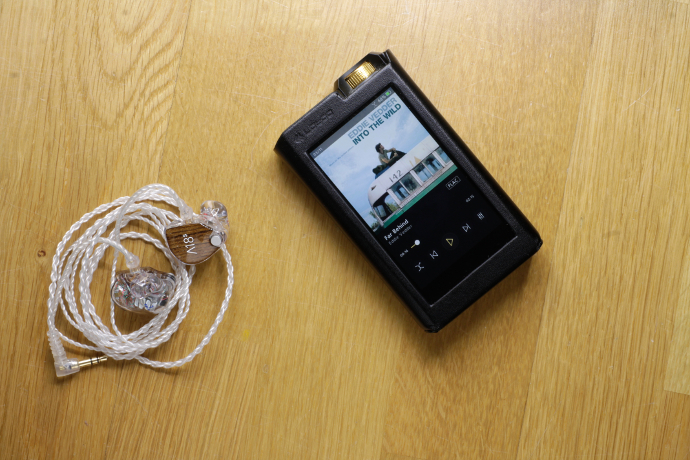
64 Audio A18s
While the A18s does a fantastic job with low end gear already, it truly shines when you match it with gear that meets its status. The best pairing I have tested during the past weeks definitely was with the Chord Electronics Hugo2. It does breathe in extra life and air. The Chord is known for being a resolution monster, and that truly shows with the A18s. The stage construction, imaging and separation are just spectacular. It’s certainly a pairing that’s worth being experienced. On a more portable solution I pretty much always reached for the Lotoo PAW Gold Touch.
For the sake of the experiment, I also hooked up the A18s to my Broadway S amplifier. Compared to the sound straight out of the Hugo 2 I didn’t get anything extra. It was a different presentation, but no gains in technical aspects.
Looking for comparisons to other top of the line CIEMs? Head over to page four!





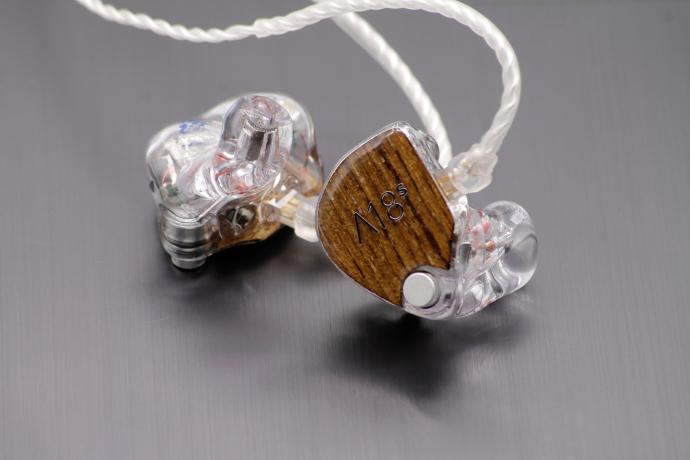

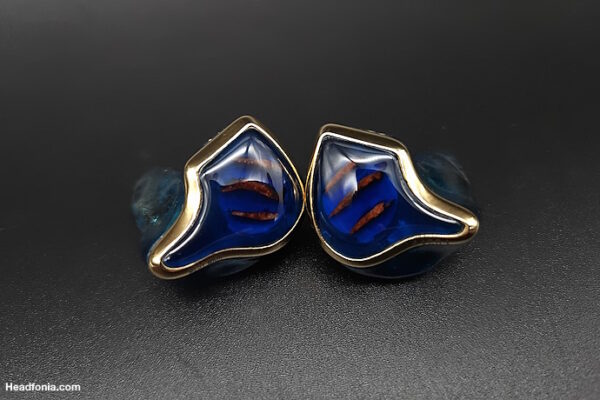
Josh
Elysium is from Germany, not Italy.
: )
Thx for the write up.
Linus
Hi Josh,
thanks for your comment.
VE is from Germany. The designer of the Elysium, who works for VE, is Italian. 😉
Cheers
Giovanni
Would you make any comparisons with Fourte/Fourte Noir? Thank you.
Linus
Hi Giovanni,
thanks for stopping by and leaving a comment.
The A18s certainly is closer in sound to the Fourté Noir than the Tia Fourté. The Tia Fourté is brighter, lighter and sharper overall. I know people had problems with the Tia’s top end. It can be quite pushy and forward. The A18s doesn’t sound like that at all. The Tia Fourté does have superior technicalities though. It spreads a wider stage and has an overall airier presentation.
The Noir and the A18s sound more alike than the Tia Fourté and the A18s. Both have a warmer signature, but the Noir to me sounds a bit fuller and thicker. The bass on the Noir is also denser and thicker. It has more impact and punch as well. The A18s is a bit thinner in the mids, but not too much really. The Noir is just a hint fuller bodied. In treble I think both are pretty similar. The staging is also rather on par with them. The Noir however presents the musicians more in front of you than the A18s.
Hope that helps.
Giovanni
Thanks for your detailed answer Linus, seems you have a preference for the Noir which, from what you say, has a bit more of everything. Is that a correct understanding or A18s has also area were it does things better than the Noir?
Linus
Hi Giovanni,
it really depends. The Noir is a fabulous monitor, and one of the very few universal IEMs I pick for non-review listening sessions. But the A18s has a certain transparency in the mids, which the Noir hasn’t. The Noir has fuller notes, which is not to everyone’s liking. The A18s has a sound that’s a bit airier. Also I can switch signatures with the A18s by replacing the apex module. Can’t do that with the Noir.
Hope that helps.
Giovanni
Thank you Linus for the additional comments, this is helpful.
Bruno Correia
Hello,
congratulations on the Analysis, I am undecided between A18s and A18t, my favorite genres are Rock, Pop, Hip Hop, some Rap and Electronic, what do you recommend? I want a Ciem de Topo and excellence. By the way, if you had to give a score from 0 to 10, which one would you give? Another issue is passive isolation good?
Sincerely,
Bruno